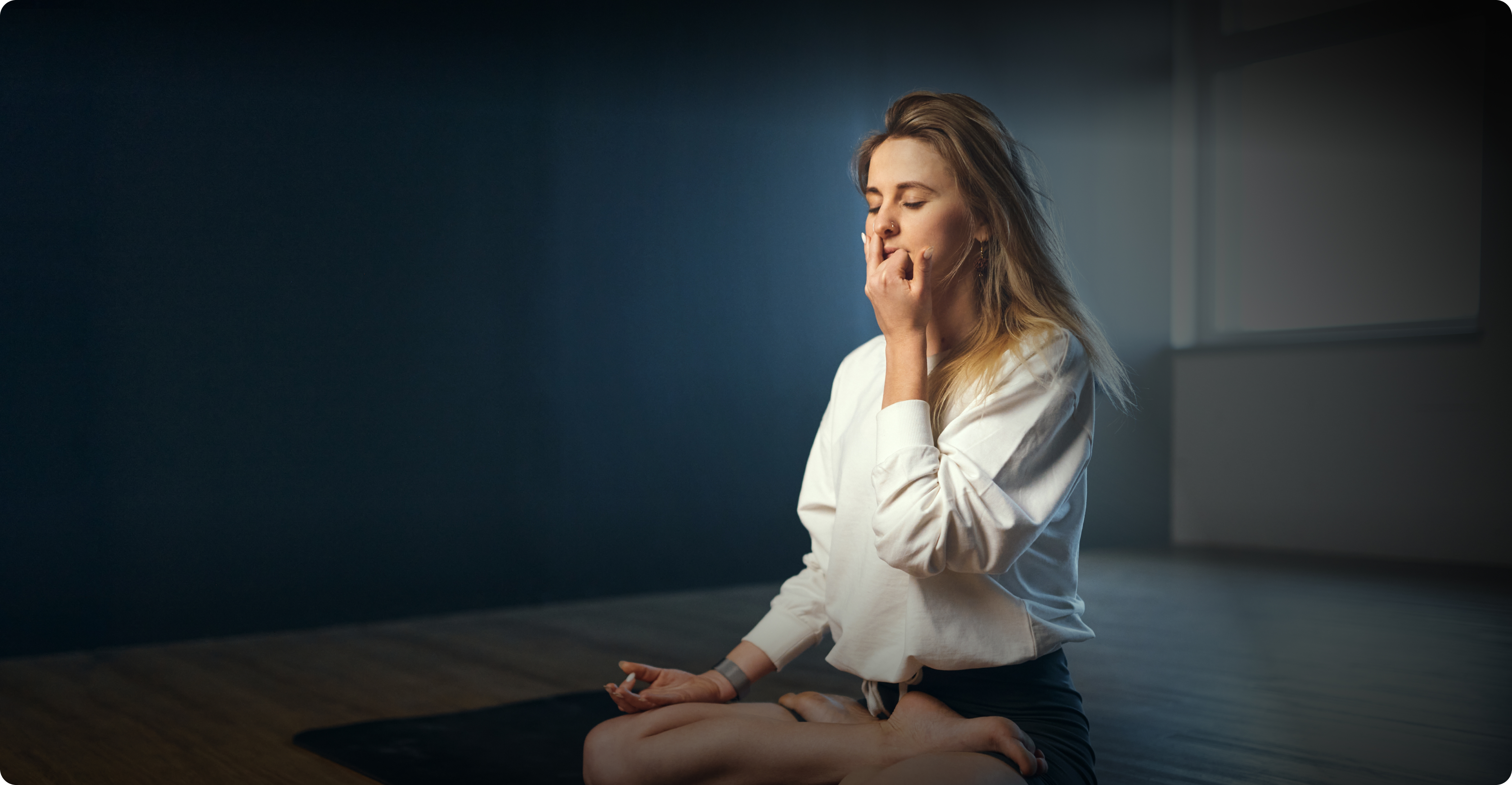Pranayama
Embrace Tranquility: The Healing Power of Pranayama
Pranayama is a powerful method that stands out for its transforming potential among ancient Indian yoga techniques. The profound practice of pranayama, which means "breath control" in Sanskrit, uses the power of conscious breathing. According to yogic philosophy, prana is believed to be the life force energy that flows through every living being, sustaining and connecting them to the universe. One way to gather and manage this essential energy is through pranayama. Through mindful breathing practices, we can improve our pranic flow and maintain a state of harmonious equilibrium in both our body and mind. By connecting with the source of life, pranayama promotes rejuvenation and vitality. Physical habits, tensions, and daily pressures might impede our bodies’ ability to move freely and energetically. Our breathing might progressively become more laboured or shallow without us even realising it. Unconscious breathing habits can form that restricts the movement of prana and breath. By practising pranayama to release the breath, we also practise allowing the life force to flow through the body. It can heal, calm, and energise the body, allowing everything to come together. It effectively enhances and harmonises the life energy within your body.
There are two energetic nerve channels, or nadis, on either side of the spine: the left ida and the right pingala. The ida nadi allows prana, or energy, to move upward. The breath flows into the lungs automatically with this upward movement. This leads to the mind being pulled towards the sensory world. After that, the energy passes via the Pingala Nadi and travels downward. Rather than being called prana, the decreasing energy is referred to as apana. This downward motion denotes a rejection of the outside world and is followed by a physical exhale. An example of this cycle is how inhalation is connected to feelings of excitement and happiness, while exhalation is tied to emotions of defeat and depression. Happiness and sadness are inseparable when they stem from external circumstances that are constantly changing.
Instead of ida and pingala, pranayama techniques enable one to redirect energy through the sushumna, the deep spine. The state of enlightenment is achieved when the power in the sushumna rises to the top of the spine and enters the spiritual eye, also known as the sixth chakra.
The practice of breath control, or pranayama, includes a range of methods that help with breath regulation and expansion. These methods have been refined over centuries in the yogic tradition and are collectively referred to as types of pranayama. Every type of pranayama has specific advantages and goals. Discover the most commonly practised pranayama methods.
The practice of breath control, or pranayama, includes a range of methods that help with breath regulation and expansion. These methods have been refined over centuries in the yogic tradition and are collectively referred to as types of pranayama. Every type of pranayama has specific advantages and goals. Discover the most commonly practised pranayama methods.
